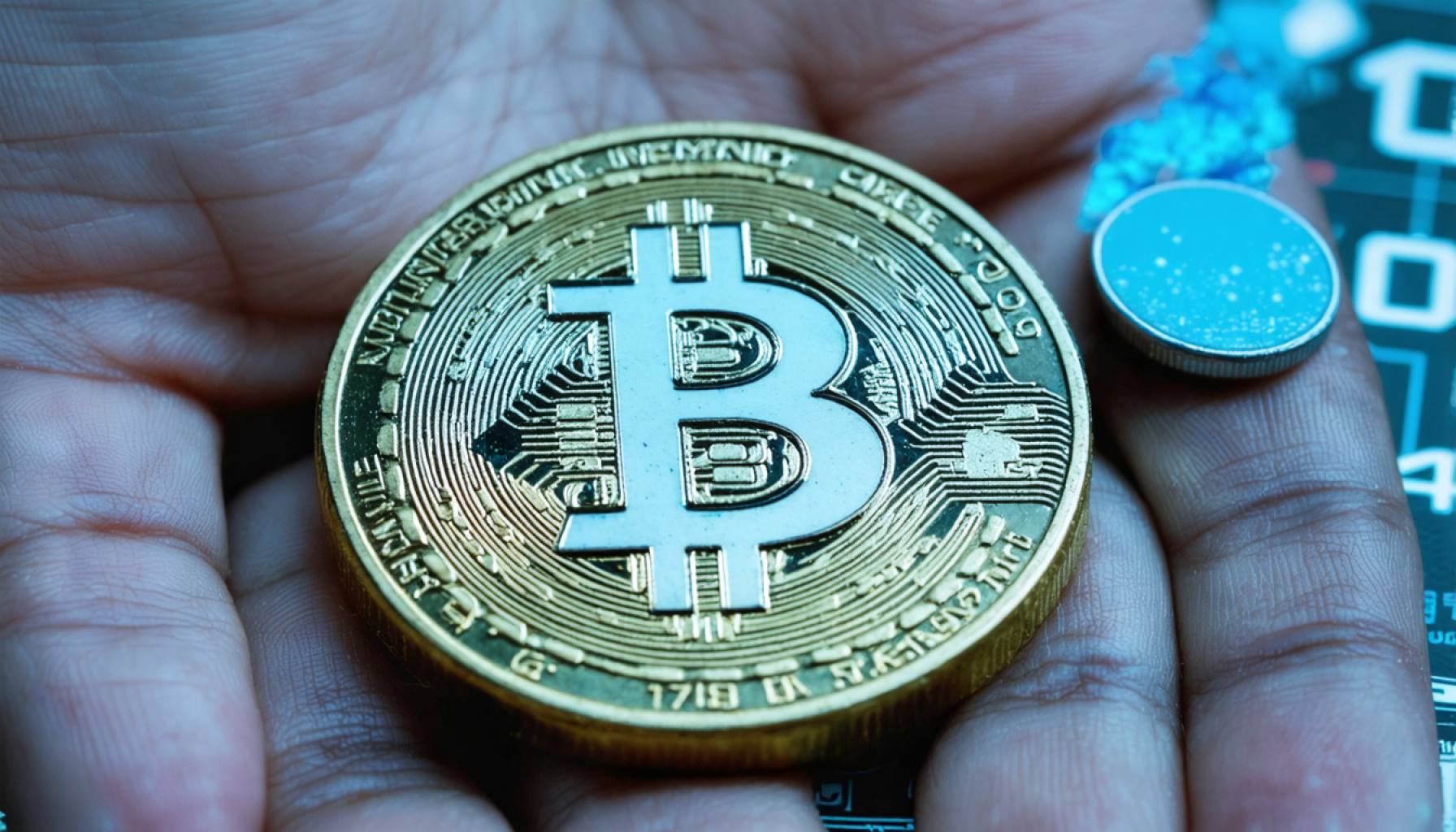- Ripple’s XRP aims to transform asset ownership and trading through blockchain tokenization of real-world assets, targeting a $19 trillion opportunity by 2033.
- The tokenization market is projected to grow from $600 billion in 2025 to $19 trillion, with potential assets including commodities, real estate, and stocks.
- Benefits include increased convenience and efficiency, reduced costs, faster transactions, and less bureaucracy for financial institutions.
- XRP has facilitated substantial asset transactions, moving assets exceeding $1 trillion, signifying its reliability and impact.
- XRP’s expanding user base and trading volume create a promising flywheel effect, enhancing the network’s value.
- Challenges involve competition and the link between XRP’s market value and the assets it tokenizes.
- Future success relies on XRP’s focus on real-world applications and strategic growth in asset tokenization to revolutionize global finance.
Ripple’s XRP is not just dreaming big; it’s laying the groundwork for a seismic shift in how we think about asset ownership and trading. Imagine a world where a $19 trillion opportunity is on the verge of revolutionizing financial transactions. This isn’t just an abstract vision—it’s a tangible path that Ripple and its cryptocurrency, XRP, are navigating with determination and foresight.
At the heart of this grand ambition lies the concept of tokenizing real-world assets on blockchain, a strategy that’s predicted to skyrocket from a mere $600 billion in 2025 to an astronomical $19 trillion by 2033, according to insights from Ripple and Boston Consulting Group. Picture commodities like gold and silver, sprawling real estate properties, bustling stock portfolios, and even luxury cars—all seamlessly traceable and tradeable on XRP’s blockchain.
But why is this transformation critical? The appeal is rooted in sheer convenience and efficiency. Financial institutions that embrace blockchain technology can bypass traditional constraints—slashing costs, accelerating transaction speeds, and minimizing bureaucratic friction. This evolution not only appeals to asset managers but also reshapes the economic landscape for investors and owners alike.
Ripple’s XRP is already a formidable player, trusted by key asset managers and institutions for facilitating transactions of substantial value—including the movement of over $1 trillion worth of assets to date. The platform’s ability to handle on-chain trading of prominent assets like U.S. Treasuries underscores its potential as a cornerstone for future tokenizations.
With every transaction, XRP fortifies its foundation, creating a demand for the coin itself as it becomes indispensable for processing these digital exchanges. The promise of a flywheel effect looms large—where growing asset volume enhances trading efficiencies, attracting even more users, culminating in an ever-expanding network.
However, the journey ahead is fraught with challenges and complexities. While XRP is currently a trailblazer in real-world asset tokenization, competitors with nimble innovations and swift adaptations could vie for market share. Moreover, the intrinsic link between XRP’s value and the assets it tokenizes may not be as strong as some investors hope. The mere facilitation of asset tracking doesn’t equate to ownership, meaning XRP’s market price won’t necessarily skyrocket in tandem with asset volume.
Yet, amid uncertainties lies vast potential. As XRP continues to refine its platform and garner confidence from financial heavyweights, the road to success becomes clearer. In a rapidly evolving digital economy, XRP’s focus on real-world applications and strategic growth in asset tokenization positions it as a significant player in what could be a transformative era for finance. The future of XRP might just hinge on this daring leap into tokenization—a leap that could reshape how we store and transfer value globally.
The Future of Finance: How Ripple’s XRP Could Reshape Asset Ownership
Understanding XRP’s Role in Asset Tokenization
Ripple’s XRP is on a mission to revolutionize the financial landscape by championing the tokenization of real-world assets through blockchain technology. This innovative approach is projected to grow from $600 billion in 2025 to a staggering $19 trillion by 2033, according to Ripple and Boston Consulting Group. But what does this mean for investors, financial institutions, and the broader economy?
How Asset Tokenization Works
1. Understanding Tokenization: Tokenization involves converting real-world assets into digital tokens that reside on a blockchain. Each token represents a portion of the asset, be it real estate, commodities like gold, or financial assets such as stocks.
2. Enhanced Transparency and Security: Blockchain technology ensures that every transaction is transparent and secure. All parties can verify transactions independently, reducing the risk of fraud and enhancing trust.
3. Fractional Ownership: Tokenization allows for fractional ownership of high-value assets, lowering entry barriers for smaller investors and democratizing access to investment opportunities.
Real-World Use Cases
– Real Estate: Tokenized real estate enables investors to own fractions of properties, diversifying their portfolios without the need to purchase an entire asset.
– Art and Collectibles: By tokenizing artwork, owners can sell shares of their valuable pieces, which were previously illiquid assets.
– Stock Portfolios: Entire stock portfolios can be tokenized, enabling seamless transfer and trading via blockchain platforms, enhancing efficiency and accessibility.
Market Trends and Forecasts
– Institutional Adoption: As financial institutions recognize the efficiency gains offered by blockchain technology, adoption rates are expected to skyrocket. Ripple’s XRP is positioned to be a major player in this evolution, forming partnerships with major banks and financial entities.
– Regulatory Developments: Regulatory clarity will be crucial for the growth of asset tokenization. While regulations are still evolving, jurisdictions that proactively establish clear guidelines are likely to become hubs for this burgeoning market.
Challenges and Controversies
– Competition: While XRP has made significant strides, competitors like Ethereum and newer blockchain technologies are vying for market share with their own innovations in asset tokenization.
– Value Correlation: The value of XRP might not directly correlate with the assets it tokenizes. The market price of XRP will depend on its utility and demand in the broader blockchain ecosystem, not solely on the volume of assets it tracks.
Security and Sustainability
– Energy Consumption: One criticism of blockchain is its energy consumption. Ripple addresses this by using a consensus algorithm that is less energy-intensive than traditional proof-of-work systems.
– Security Measures: Ripple continues to enhance security protocols to protect against cyber threats, making XRP a secure option for asset tokenization.
Actionable Recommendations
– Stay Informed: Investors should stay updated on regulatory developments and Ripple’s partnerships, as these will impact XRP’s feasibility and growth potential.
– Diversify: Consider diversifying your portfolio by investing in tokenized assets that offer fractional ownership.
– Engage with Experts: Consult financial advisors familiar with digital assets and blockchain technology to understand the risks and opportunities associated with investing in tokenized assets.
Conclusion
Ripple’s proactive approach to asset tokenization and its robust blockchain platform position XRP as a key player in the future of finance. As we move toward a more decentralized and digital economy, investors and institutions that embrace these changes will likely reap the benefits of enhanced efficiency, security, and market accessibility.
For more insights into Ripple and blockchain innovations, visit Ripple.








